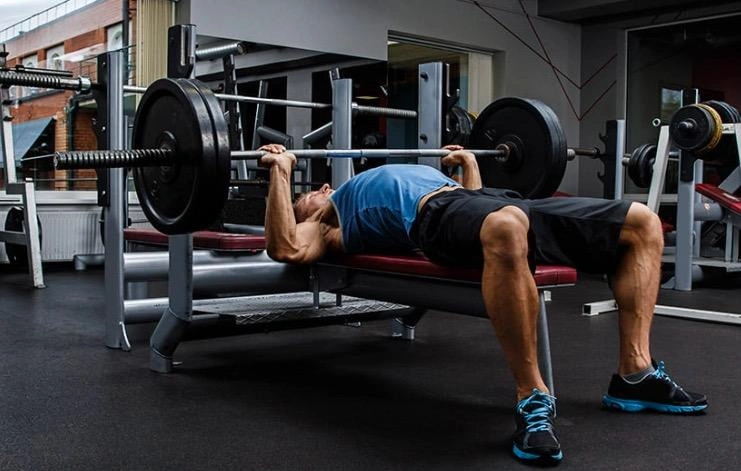Intro
Did you know that over 111 million people and 30% of all Americans walk for fitness every year? Although often overlooked, it is a simple yet perfect exercise as a cardio supplement to your weight training routine.
I have struggled to find the right balance of cardio exercises I enjoyed and could remain consistent with. However, about two years ago, I accidentally discovered the power of walking in a YouTube fitness video by Dr.
The video covered all the benefits of walking. It explained how it helps to cut fat and build lean muscle (when properly supplemented with weightlifting) without the wear and tear you can experience from other cardio exercises like running.
Let’s lace up our sneakers (or dress shoes, boots, etc.) and dive into the benefits of walking as a low-impact way to shred and build lean muscle.
Walking for Cardio Health
Walking is an excellent way to boost your cardiovascular health and endurance. This can help you to perform better in the gym, allowing you to push harder and maximize your results from your weightlifting sessions.
Additionally, it can improve blood circulation, reduce LDL cholesterol (bad cholesterol), and increase HDL cholesterol (good cholesterol) levels, which can contribute to a healthier cardiovascular system.
According to the CDC, it helps lower the risk of heart disease, stroke, type 2 diabetes, and some cancers.
The best part is that you don’t have to walk for miles and miles to see the health benefits of walking.
Even a brisk walk for just 30 minutes a day can significantly lower cholesterol levels and help maintain a healthy weight, thus contributing to a healthier heart.
Adding 150 minutes of walking in a week can add 3.4 years to a person’s lifespan.
In summary, walking effectively strengthens your cardiovascular system, improves your overall endurance, and promotes a healthy heart.
How does walking benefit your metabolism?
Weightlifting is a great way to burn calories and boost your metabolism during your workout, but there is a limit to how many calories you can burn with lifting alone.
Pairing weightlifting with walking can help keep your metabolism active throughout the day, burning additional calories and aiding in weight loss while preserving muscle mass gained through lifting.
Additionally, walking can increase your resting metabolic rate, allowing you to burn more calories even when not exercising.
How many calories does walking burn?
The number of calories burned during a walk depends on various factors, such as walking speed, distance covered, and body weight.
On average, a 30-minute brisk walk can burn around 150-200 calories. According to the CDC, walking 7,000 to 8,000 steps per day is recommended, but increasing the intensity and duration of your walks can help you burn more calories and achieve weight loss even faster.
Tracking your steps
I recommend counting your daily steps, setting achievable goals, and turning your walks into a fun game to challenge yourself regularly.
Personally, I aim to achieve 15,000 steps per day, but during my cutting phase, I increase it to 20,000 steps per day.
You can open the health app on your iPhone or Android to monitor your daily, weekly, and monthly walking data. Alternatively, you can install a steps-counting app of your choice.
Before making walking a part of your cardio routine, it’s essential to understand your daily steps as your baseline. Once you know your starting point, you can set realistic goals and work towards achieving them.
Weight Training & Walking: Maximizing Your Results
When properly balanced, walking and weight training are powerful duos that can maximize your fitness results. Here’s how:
- Build Muscle & Burn Fat: Walking on rest days can help keep your metabolism going, promote fat loss, and preserve the muscle you’ve built in the gym.
- Boost Recovery: Brisk walking can help flush out lactic acid and accelerate muscle repair after weight training sessions.
- Warm-up & Cool Down: Use walks as active recovery before and after intense workouts to prepare your body and prevent injuries.
- Mix it up: By walking uphill or on inclined surfaces, you can increase the intensity of your workout. You can add interval training or bodyweight strength exercises like lunges and squats into your walking routine to further engage and strengthen specific muscle groups.
Walking Versus Running: The Pros and Cons
Running is an effective way to burn calories, but it may not be the best choice for everyone for several reasons. Here’s a comparison of walking and running to help you decide which exercise is right for you.
Wear & Tear on Muscle Tissue
- Running: Building muscle requires effort; losing it can be a nightmare. Intense cardio, like running, can put your hard-earned muscle at risk.
- Walking, on the other hand, is a low-impact exercise that burns fat while preserving muscle. It keeps your body in fat-burning mode, using fat stores for fuel instead of tearing down muscle tissue.
Injury Risk & Impact on Joints
- Running is a high-impact exercise that can be hard on your joints, especially your knees, and may increase the risk of injury. According to Yale Medicine, at least 50 percent of regular runners get hurt each year, sometimes from trauma, such as a fall, but more often from overuse.
- Walking in contrast,is a gentler exercise, making it an ideal choice for people with knee problems or those who prefer a low-impact workout.
Although running burns more calories in a shorter amount of time, the duration of your walk can be increased to achieve a similar, if not greater, calorie burn compared to a brief run.
When deciding between running and walking, consider the pros and cons to determine which exercise best fits your lifestyle and fitness goals.
The Mood Boosting Power of Walking
There are many days when I go for a walk and the mental health benefits are more important to me than the physical ones. It might be because of a busy or stressful work day, or maybe I have a personal problem that I need to think through, but walking serves as the perfect temporary escape from the madness.
Studies have shown that Walking can reduce the risk of becoming depressed by 30%. It is a natural stress reliever that lowers cortisol levels (the stress hormone) and as you walk, your brain releases a combination of mood-enhancing neurochemicals like dopamine and serotonin. These chemicals work behind the scenes to lift your spirits, help you sleep better, recover faster, and approach your workouts with renewed focus.
Additional Benefits of Walking
Spark Creativity: Walking has long been associated with enhanced creativity.. Apple’s co-founder, the late Steve Jobs, and current Facebook CEO are renowned for their “walk and talk” meetings, essentially think tanks on the go. The constantly changing scenery can inspire fresh perspectives while allowing your mind to wander.
Accessibility: Walking requires minimal equipment and can be done anywhere, anytime. No fancy gym membership or expensive gear is needed; just lace up your shoes and get moving.
Variety and Motivation: Walking requires minimal equipment and can be done anywhere, anytime, making it a versatile and sustainable fitness option. It’s also a great way to stay active on rest days and keep your fitness journey exciting.
Time Flexibility: As a busy individual, finding time for exercise when juggling personal commitments and professional deadlines can be challenging. walking provides a simple and accessible solution that can be easily incorporated into your daily routine.
The Science of Walking
The combination of weight lifting and walking packs a one-two punch that drives fat loss, lean muscle gains, and your overall well-being.
Fat Burning Synergy:
- Low-intensity, steady-state cardio like walking, burns fat efficiently by targeting fat stores for fuel. The Journal of Applied Physiology found that individuals who walked briskly for 30 minutes most days of the week lost significantly more body fat than those who did not exercise.
Muscle Building:
- Walking keeps blood flowing, delivering nutrients to your muscles after weight training promoting repair and growth. Research has shown that combining walking with resistance training led to greater muscle mass gains compared to resistance training alone.
Muscle Preservation:
- Walking reduces muscle breakdown, particularly after intense workouts. A study in the American Journal of Preventive Medicine showed that incorporating moderate-intensity exercise like walking post-workout helped minimize muscle protein breakdown.
Overall Health & Fitness
- Walking improves cardiovascular health, strengthens bones, and boosts mood. Recent studies have found that regular walking significantly reduces the risk of cardiovascular disease, osteoporosis, and depression.
Conclusion
Walking isn’t just a stroll in the park; it’s a dynamic and effective way to enhance your weight-training efforts and achieve a well-rounded fitness regimen. By harnessing the targeted muscle engagement, active recovery benefits, and joint-friendly nature of walking, you can take significant strides toward achieving the lean, toned physique you’ve been striving for. So, lace up your sneakers, hit the pavement, and let the power of walking elevate your fitness journey to new heights!
Always remember to listen to your body and consult with a fitness professional or healthcare provider before making significant changes to your exercise routine.









